The combined functions of proapoptotic Bcl-2 family members bak and bax are essential for normal development of multiple tissues
- PMID: 11163212
- PMCID: PMC3057227
- DOI: 10.1016/s1097-2765(00)00136-2
The combined functions of proapoptotic Bcl-2 family members bak and bax are essential for normal development of multiple tissues
Abstract
Proapoptotic Bcl-2 family members have been proposed to play a central role in regulating apoptosis. However, mice lacking bax display limited phenotypic abnormalities. As presented here, bak(-/-) mice were found to be developmentally normal and reproductively fit and failed to develop any age-related disorders. However, when Bak-deficient mice were mated to Bax-deficient mice to create mice lacking both genes, the majority of bax(-/-)bak(-/-) animals died perinatally with fewer than 10% surviving into adulthood. bax(-/-)bak(-/-) mice displayed multiple developmental defects, including persistence of interdigital webs, an imperforate vaginal canal, and accumulation of excess cells within both the central nervous and hematopoietic systems. Thus, Bax and Bak have overlapping roles in the regulation of apoptosis during mammalian development and tissue homeostasis.
Figures
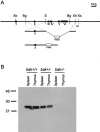
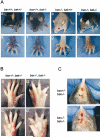
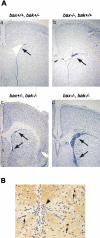
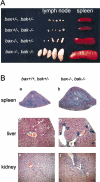
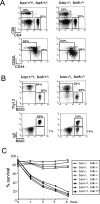

References
-
- Adams JM, Cory S. The Bcl-2 protein family: arbiters of cell survival. Science. 1998;281:1322–1326. - PubMed
-
- Bayer SA, Altman J. Neocortical development. Raven Press; New York: 1991.
-
- Cecconi F, Alvarez-Bolado G, Meyer BI, Roth KA, Gruss P. Apaf1 (CED-4 homolog) regulates programmed cell death in mammalian development. Cell. 1998;94:727–737. - PubMed
Publication types
MeSH terms
Substances
Grants and funding
LinkOut - more resources
Full Text Sources
Other Literature Sources
Molecular Biology Databases
Research Materials

